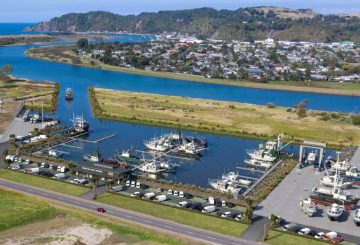뉴질랜드의 비디오 게임 산업은 태즈먼 전역의 고위 직원을 끌어들이는 세금 인센티브로 인해 최대 게임 개발사를 호주로 잃을 위험에 처해 있습니다.업계 전반에 걸쳐 30% 의 세금 감면 혜택을 제공하고 일부 주에서는 달러당 45센트의 수익을 제공하는 호주 게임 산업으로 인한 경쟁으로 인해 업계의 성장이 크게 둔화되었습니다.오클랜드 최대 게임 개발사 중 하나인 RocketWerkZ는 뉴질랜드의 모든 주요 게임 스튜디오가 호주 고용주의 밀렵에 직면하면서 이러한 인센티브가 업계에 막대한 문제를 야기하고 있다고 우려를 표명했습니다.
이 산업은 최근 몇 년 동안 매년 평균 20-30% 의 성장률을 기록하며 크게 성장하고 있지만 세금 인센티브로 인해 산업 성장이 정체되고 있습니다.뉴질랜드 게임 개발자 협회 회장 첼시 랩 (Chelsea Rapp) 은 비디오 게임이 뉴질랜드 최대 수출품 중 일부를 빠르게 추월하고 있으며 매출은 양모 수출을 능가하고 있다고 말했다.2026년까지 이 산업의 가치는 10억 달러에 달할 것으로 예상되지만, 호주로 고위 직원을 잃게 될 위협은 성장을 저해할 수 있습니다.
세금 인센티브는 고위 직원의 유지 문제를 야기할 뿐만 아니라 젊은 인재 육성을 어렵게 만들고 있습니다.모든 노인을 잃었기 때문에 스튜디오에서는 그들을 대신할 후배 인력을 3~5명 고용할 수 없는 것으로 추정됩니다.일부 스튜디오가 호주에 새 사무소를 개설하여 기업에 더 큰 인센티브를 제공하겠다는 제안을 받았다는 사실로 인해 상황은 더욱 악화되었습니다.웰링턴 스튜디오 PikPok은 작년 초부터 이미 호주 고용주에게 15명의 직원을 잃었고, 이로 인해 팀을 유지하고 확장하기가 더 어려워졌습니다.
뉴질랜드 게임 업계는 두 산업이 많은 기술과 인재를 공유하고 있다는 점을 감안할 때 영화 산업이 인센티브를 받는 것을 보고 좌절하고 있습니다.비디오 게임 산업은 뉴질랜드 소유이며 본사는 할리우드가 아닌 뉴질랜드에 있기 때문에 비즈니스 근거가 훨씬 더 강력합니다.업계에서는 5월에 발표될 예정인 2023년 예산의 일환으로 경쟁력 있는 인센티브가 발표되어 업계가 지속적으로 성장하고 고위 직원을 유지할 수 있기를 희망합니다.





























































